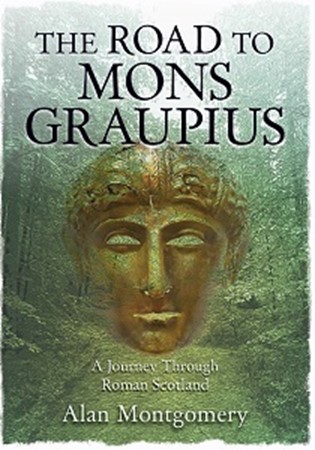
This book is subtitled ‘A journey through Roman Scotland’, which neatly summarises the contents of the book, if not the actual journey taken by the author. The book is a travelogue through modern Scotland, starting at Woden Law close to the border with England and ending at Bennachie in Aberdeenshire, travelling on foot, by car and by bicycle. The author follows former Roman roads where possible and stops at a number of Roman military sites, following the most likely route of the Agricolan invasion of Caledonia in 83 CE.
Along the way the author discusses the lives of Tacitus and Agricola, but more interestingly the historiography of the study of the Romans in Scotland. Alternative interpretations of Tacitus’s account and of the archaeological sites along the route are discussed in an informal, coherent manner, with neither bias nor judgement. The author includes recent archaeological work and recent theories, together with interviews with owners of sites and archaeological specialists.
Given the breadth of the subject matter covered and the multiple aims of the book, the author manages to stay focused and pack a lot into what is really quite a small volume. It is illustrated throughout with black and white illustrations by the author, these comprise a mixture of watercolour paintings and copies of published site plans of various dates which combine to provide character to some of the sites discussed and clarity when looking at more complex earthworks.
This is not an academic publication, nor does it pretend to be. The bibliography is sparse and there are no references throughout the text and the illustrations are just that – illustrations rather than figures. On that basis this book is not aimed at the specialist. It is, however, very good as an introduction to Tacitus and the Agricolan invasion of Caledonia, particularly for its presentation of the historiography and different political views involved.
The book has a few odd moments, most of which can be forgiven (although I would like to know who told him how to pronounce ‘Braco’). The biggest problem the book has is that the site of the battle of Mons Graupius is unknown and so last chapter is a bit of a whistlestop tour of potential sites accompanied by some whimsical reflections. That said, it is difficult to know how else to conclude a book of this nature and the author’s discussion reflects most of the academic discussion on the subject.
In summary, this is a pleasant archaeological travelogue which provides a good introduction to early Roman incursions into Scotland.
